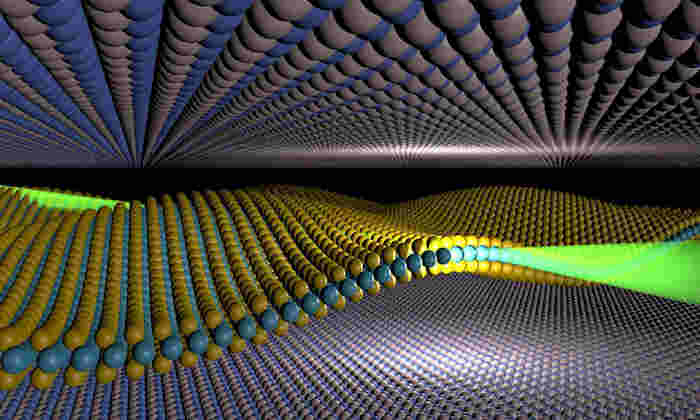2D materials clean up their act
09 Aug 2017
Two-dimensional materials such as graphene may only be one or two atoms thick but they are poised to power flexible electronics, revolutionise composites and even clean our water

However, being this thin comes at a price: the functional properties we depend on will change if the material becomes contaminated.
Luckily, many 2D materials exhibit the ‘self-cleaning phenomenon’, meaning when different 2D materials are pressed together, stray molecules from the air and the lab are pushed out leaving large areas clear of impurities.
Since graphene’s isolation in 2004 a whole host of other 2D materials have been discovered each with a range of different properties.
When graphene and other 2D materials are combined, the potential of these new materials comes alive.
Layering stacks of 2D materials in a precisely chosen sequence can produce new materials called heterostructures that can be fine-tuned to achieve a specific purpose (from LEDs, to water purification, to high speed electronics).
These flat regions have yielded some of the most fascinating physics of our time. Now, the assumption that these areas are completely clean is under scrutiny.
Writing in Nano Letters a team of researchers at the National Graphene Institute at The University of Manchester have shown that even the gas within which the 2D material stacks are assembled can affect the structure and properties of the materials.
Lead researcher Dr Sarah Haigh said: “This sort of insight is changing how we build devices like LEDs and sensors from 2D materials. The properties of these devices were known to depend heavily on how and where we make them, and for the first time we have observed why.”
The consequences of this finding will directly impact on how we make graphene devices for future applications, showing that even the environment within which 2D material stacks are assembled affects the atomic structure and properties.
